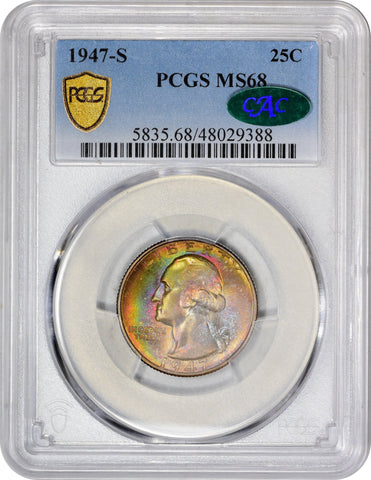This realm of numismatics offers a captivating adventure into the past, society, and the art of making coins. For both novice and experienced collectors, discovering rare U.S. coins is akin to starting a quest for treasure, in which each coin tells a unique story and carries considerable value. Whether you are sifting through your grandmother's attic or visiting a local coin shop, knowing how to identify valuable coins can lead to unexpected finds that could enhance your collection and possibly be worth a small fortune.
In the realm of American numismatics, scarcity can result from different factors such as restricted mintage, historical significance, or singular errors during manufacturing. Comprehending what makes certain coins more desirable than others is crucial to discovering these concealed gems. From the famous 1913 Liberty Head nickel to the elusive 1804 silver dollar, knowing how to tell apart genuine rare U.S. coins from the ordinary ones can transform your collecting experience and deepen your understanding for American history.
Understanding Rare Currency
Uncommon currency are characterized by their scarcity, demand, and unique historical importance. cac certified coins United States currency scene has a rich history, with notable coins transforming into greatly desired by numismatists and investors alike. Considerations such as minting errors, limited production runs, or important historical occurrences add to the scarcity of particular coins. Understanding the distinct features that elevate a coin's value is crucial for any budding numismatist.
One of the crucial aspects in spotting rare U.S. coins is recognizing their marks of origin. Mint marks reveal where a coin was produced, which can greatly impact its rarity. For instance, coins struck in limited facilities or within specific years can fetch much elevated prices. Additionally, recognizing the coin's state, determined by grading standards, is key; coins in excellent condition are usually more valuable than those that are damaged.
As you delve deeper into the world of scarce coins, it's crucial to familiarize yourself with the most notable rarities in United States history. Famous examples include the 1909 S V.D.B. Lincoln penny, the thirty-three St. Gaudens gold double eagle, and the 1969-S Kennedy half dollar. Studying these coins not only expands your understanding but also enables you discover potential finds in the coin market.
Prime Rare U.S. Currency to Seek Out
When searching for scarce U.S. coins, it is important to concentrate on particular coins that have considerable historical importance and minimal production. One excellent example is the 1909-S V.D.B. Lincoln penny. This coin is infamous among collectors due to its low production and the debate surrounding its designer's initials, which were subsequently removed. Finding one in excellent condition can elevate your collection's value considerably.
Another in-demand coin is the 1913 Liberty Head nickel. Only five of these coins are known to exist, making them one of the most elusive in U.S. numismatic history. Their distinctive design and limited number create a hype among collectors alike. If you ever discover one, it’s important to verify its genuineness, as the value can attain millions of dollars.
The 1804 Silver Dollar is another gem worth noting. Known as the “queen of American coins,” it has an fascinating story and a scarcity that captivates collectors. While various types exist, the first 1804 coins were struck in the 1830s as gifts for foreign dignitaries, making them even harder to find. Collectors should be vigilant when hunting for this coin, as it stands as a symbol of wealth and prestige in the numismatic world.
Ways to Assess the Value of Coins

Determining the price of U.S. rare coins requires a thorough evaluation of multiple critical factors. To start, the coin's quality is essential; it is evaluated on a scale from from Lowest through Mint State. Coins in better condition naturally demand increased prices, so knowing how to determine the use, luster, and all blemishes is essential. Additionally, coin enthusiasts often consult grading scales like the Sheldon Grading Scale to rank their coins precisely.
A further important aspect to consider is the uniqueness of the coin. Factors such as production and demand can greatly affect a coin's worth. A coin that experienced a limited production run or one that is highly desired by numismatists because of its historical significance or unique features will likely be priced at greater. Tools such as valuation guides and online auction platforms can give guidance into current market prices for specific coins, which help collectors determine how scarce their coins really are.
Lastly, comprehending the market trends is crucial when assessing the value of U.S. rare coins. Coin prices can vary based on demand, market conditions, and even news about coin finds. Becoming a member of numismatic societies, attending coin shows, or engaging with internet groups can enable collectors informed of these developments and help them in deciding wisely when purchasing, trading, or appraising their coin collections.
